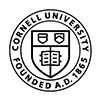Meniscus
Arthroscopic Centralization of the Medial Meniscus Reduces Load on a Posterior Root Repair Under Dynamic Varus Loading
Background: In addition to the integrity of the meniscal hoop function, both the anterior and posterior meniscus roots as well as the meniscotibial and meniscofemoral ligaments are crucial in restraining meniscal extrusion. However, the interaction and load sharing between the roots and these peripheral attachments (PAs) are not known.
Clinical and Radiological Outcomes of Medial Meniscal Allograft Transplantation Combined With Realignment Surgery
Background: The outcomes of medial meniscal allograft transplantation (MMAT) combined with high tibial osteotomy (HTO) com- pared with isolated MMAT remain unclear.
Lateral Meniscal Allograft Transplantation Shows a Long-Term Chondroprotective Effect on Quantitative Magnetic Resonance Imaging T2 Mapping at 7-Year Minimum Follow-Up
Purpose: To assess the long-term chondroprotective effect of lateral meniscal allograft transplantation (MAT) using quan- titative magnetic resonance imaging (MRI) T2 mapping.
Revision and Conversion to Arthroplasty Are Low Among Adolescents Undergoing Meniscal Allograft Transplantation Using the Bridge-In-Slot Technique at Midterm Follow-Up
Purpose: To report midterm outcomes after primary medial and lateral meniscal allograft transplantation (MAT) with fresh- frozen allografts implanted with the bridge-in-slot technique in the adolescent patient population
Arthroscopic Meniscal Repair and Meniscectomy for Adult Discoid Lateral Meniscus Results in Progression to Valgus Alignment and Lateral Compartment Degeneration Compared With Nonoperative Treatment and Nondiscoid Lateral Meniscus
Purpose: To analyze the effect of the arthroscopic meniscal procedure in adult discoid lateral meniscus (DLM) according to the age and meniscal-preserving by making comparisons with the nondiscoid lateral meniscus (N-DLM).
Survivorship of 157 Arthroscopic Meniscal Allograft Transplants Using Bone Fixation at a Mean of 7 Years and Prognostic Factors Analysis
Background: Meniscal allograft transplantation (MAT) is an accepted and effective treatment option in the context of unsalvageable menisci, particularly in young and active patients. It has been shown to reduce pain and improve knee function in previously symptomatic patients. However, there is still limited knowledge about the long-term survival rates of allografts, the durability of clinical results, and the influence of patient-specific parameters, such as leg alignment, tibial slope, and preoperative International Cartilage Regeneration & Joint Preservation Society (ICRS) grade.
Minimum 10-Year Clinical Outcomes and Survivorship of Meniscal Allograft Transplantation With Fresh-Frozen Allografts Using the Bridge-in-Slot Technique
Background: Meniscal allograft transplantation (MAT) has been shown to provide clinical benefits in patients with symptomatic meniscal deficiency in the short term and midterm. There is, however, a paucity of data regarding long-term outcomes after MAT using fresh-frozen allografts and the bridge-in-slot technique.
Clinical Outcome of Meniscus Centralization with Medial Meniscus Root Repair for the Extruded Medial Meniscus
Purpose: The purpose of this study was to 1) describe the patient-reported clinical outcomes following medial meniscus root repair with meniscus centralization, and 2) identify common complications and detail provisional results.
Minimum 10-Year Clinical Outcomes and Survivorship of Meniscal Allograft Transplantation With Fresh-Frozen Allografts Using the Bridge-in-Slot Technique
Background: Meniscal allograft transplantation (MAT) has been shown to provide clinical benefits in patients with symptomatic meniscal deficiency in the short term and midterm. There is, however, a paucity of data regarding long-term outcomes after MAT using fresh-frozen allografts and the bridge-in-slot technique.
Medial Collateral Ligament Pie-Crusting for Isolated Medial Meniscal Root Repair is Associated with Improved Clinical Outcomes with Minimum 2-Year Follow-Up
Purpose: The purpose of this study was to determine clinical and radiographic outcomes of medial collateral ligament (MCL) pie-crusting during isolated medial meniscal root repair.
Revision and Conversion to Arthroplasty are Low Among Adolescents Undergoing Meniscal Allograft Transplantation Using the Bridge-In-Slot Technique at Midterm Follow-Up
Purpose: To report midterm outcomes following primary medial and lateral meniscal allograft transplantation (MAT) with fresh-frozen allografts implanted with the bridge-in-slot technique in 6 the adolescent patient population.
Survivorship After Lateral Meniscal Allograft Transplantation Plus Concurrent Cartilage Procedure in Patients With Poor Cartilage Status
Background: The effect of a concurrent cartilage procedure in lateral meniscal allograft transplantation (MAT) in patients with bipolar cartilage lesions (high-grade lesions on both the femoral and the tibial side) is not well studied. An objective evaluation of graft status after MAT and a concurrent cartilage procedure has not been reported.
Are Outcomes of Acute Meniscus Root Tear Repair Better Than Debridement or Nonoperative Management?
Background: Meniscus root tears (MRTs) are defined as radial tears within 1 cm of the meniscus root insertion or an avulsion of the meniscus root itself. They lead to altered joint loading because of the failure to convert axial (compressive) loads into hoop stresses. Untreated MRTs can result in altered joint biomechanics and accelerated articular cartilage degeneration and the development of osteoarthritis (OA), yet optimal management remains unclear.
Benefits of Meniscal Repair in Selected Patients Aged 60 Years and Older
Background: Little is known about the benefits and outcomes of meniscal repair in patients older than 60 years
Kinematic Analysis of Lateral Meniscal Oblique Radial Tears in Anterior Cruciate Ligament–Reconstructed Knees
Background: : Lateral meniscal oblique radial tears (LMORTs) affect joint and meniscal stability in anterior cruciate ligament (ACL)– deficient knees
Purpose: To determine the clinically relevant kinematics associated with the most common posterior horn LMORT lesion types, types 3 (LMORT3) and 4 (LMORT4), untreated versus arthroscopic repair versus partial meniscectomy in combination with ACL reconstruction (ACLR).
Comparison of Long-term Radiographic Outcomes and Rate and Time for Conversion to Total Knee Arthroplasty Between Repair and Meniscectomy for Medial Meniscus Posterior Root Tears
Background: Superior capsular reconstruction (SCR) and lower trapezius transfer (LTT) have recently been utilized to treat irreparable rotator cuff tears (IRCTs). There is still no clear guideline on which treatment method is a better fit for posterosuperior IRCTs with high-grade 4 fatty infiltration in the infraspinatus.
The immediate meniscal allograft transplantation achieved better chondroprotection and less meniscus degeneration than the conventional delayed transplantation in the long-term
Purpose: The purpose of this study was to compare the long-term clinical and radiological outcomes between the immediate and delayed meniscus allograft transplantation (MAT).
Biologic Augmentation Reduces the Failure Rate of Meniscal Repair: A Systematic Review and Meta-analysis
Background: Clinical results after isolated meniscal repair are not always satisfactory, with an overall failure rate of around 25%. To improve the success rate of meniscal repair, different biologic augmentation techniques have been introduced in clinical practice, but their real efficacy is still controversial.
Functional, Magnetic Resonance Imaging, and Second-Look Arthroscopic Outcomes After Pullout Repair for Avulsion Tears of the Posterior Lateral Meniscus Root
Background: Little data exist in the literature regarding second-look arthroscopic outcomes after pullout repair for avulsion tears of the posterior lateral meniscus root.
Outcomes At Twenty Years After Meniscectomy In Patients Aged Between 50-70 Years
Background: Purpose of this study was to report the outcomes of AM at twenty years follow-up through timing/rate of conversion to total knee replacement (TKR) and Knee injury and Osteoarthritis Outcome Score (KOOS), focusing on detection of specific predictor variables for these outcomes, in patients aged between 50-70 years old.
Patient-reported outcomes of meniscal repair and meniscectomy in patients 40 years of age and older show similar good results
Abstract: The purpose of this study is to evaluate patient-reported outcome measures (PROMs) in patients aged 40 years and older who underwent meniscal repair or meniscectomy.
Long-term Outcomes and Survivorship of Fresh-Frozen Meniscal Allograft Transplant With Soft Tissue Fixation: Minimum 10-Year Follow-up Study
Background: Meniscal allograft transplant (MAT) is considered an effective procedure for reducing pain and improving knee function. Nevertheless, the current knowledge regarding the results of MAT is limited to short- to mid-term follow-up studies, especially for arthroscopic techniques.
Meniscal Allograft Transplantation After Anterior Cruciate Ligament Reconstruction Can Improve Knee Stability: A Comparison of Medial and Lateral Procedures
Background: The purpose of this study was to evaluate the clinical score and stability after meniscal allograft transplantation (MAT) after a previous anterior cruciate ligament (ACL) reconstruction.
Return to Sport and Patient Satisfaction After Meniscus Allograft Transplantation
Purpose: To investigate patient return to sport and satisfaction following meniscus allograft transplantation (MAT).
Root Repair Versus Partial Meniscectomy for Medial Meniscus Posterior Root Tears: Comparison of Long-term Survivorship and Clinical Outcomes at Minimum 10-Year Follow-up
Background: The importance of repair in medial meniscus posterior root tears (MMPRTs) has been increasingly recognized because it restores hoop tension. However, no study has compared the long-term outcomes between meniscectomy and repair.
Does Age Itself Have an Adverse Effect on Survivorship of Meniscal Allograft Transplantation? A Cartilage Status and Time From Previous Meniscectomy-Matched Cohort Study
Background: The aging process is accompanied by several conditions that could affect the outcome of meniscal allograft transplantation (MAT). These conditions have made it difficult for clinicians to determine the effect of chronologic age on survivorship after MAT.
Predictive Factors for Failure of Meniscal Repair
Purpose/Hypothesis: The purpose of this study was to review all meniscal repairs and potential predictors for failure during a 12- year period. We hypothesized that meniscal anchors, lateral repairs, and repairs made in conjunction with an anterior cruciate ligament reconstruction (ACLR) would have fewer failures than meniscal arrows, medial repairs, and isolated repairs. We also hypothesized that younger patients and acute tears would be associated with fewer failures.
High rate of return-to-play following meniscal allograft transplantation.
PURPOSE: In recent years, meniscal allograft transplantation (MAT) has been established as an effective option for young patients with symptomatic meniscus insufficiency with goals of functional improvement and joint preservation. Currently, there is little available information on return-to-play among patients in this cohort. The purpose of this study is to systematically review the literature and to evaluate the reported rehabilitation protocols, return-to-play guidelines, and subsequent rates of return-to-play following MAT.
Medial vs. Lateral Meniscus Root Tears: Is There a Difference in Injury Presentation, Treatment Decisions, and Surgical Repair Outcomes?
PURPOSE:To determine (1) the demographic characteristics as well as radiographic findings of medial versus lateral meniscal root tears at time of presentation, (2) treatment decisions and clinical outcomes of patients undergoing medial versus lateral root repair, and (3) risk factors for worse clinical and radiographic outcomes.
Delayed or neglected meniscus tear repair and meniscectomy in addition to ACL reconstruction have similar clinical outcome.
PURPOSE:To compare the clinical outcomes of meniscus repair and meniscus resection with concurrent anterior cruciate ligament (ACL) reconstruction in patients with ACL rupture and neglected or delayed medial meniscus tears.
Medial Meniscus Posterior Root Tear Treatment: A Matched Cohort Comparison of Nonoperative Management, Partial Meniscectomy, and Repair.
BACKGROUND: There are limited data comparing the outcomes of similarly matched patients with a medial meniscus posterior root tear (MMPRT) treated with nonoperative management, partial meniscectomy, or repair.
Effects of Compliance With Procedure-Specific Postoperative RehabilitationProtocols on Initial Outcomes AfterOsteochondral and Meniscal AllograftTransplantation in the Knee
PURPOSE: Osteochondral and meniscal allograft transplantation have been performed in the knee for more than 40 years, withthe number of patients treated each year growing as allograft quantity and quality increase. To date, the effects of postoperativemanagement on outcomes after these procedures have received relatively little focus in the peer-reviewed literature.
Second-Look Arthroscopic Evaluations of Meniscal Repairs Associated With Anterior Cruciate Ligament Reconstruction.
PURPOSE: To examine the healing status of meniscal repair performed concomitantly with anterior cruciate ligament (ACL) reconstruction with our current indication and surgical procedure based on second-look arthroscopic results. Additionally, the significance of the demographic and clinical factors that can potentially influence the healing rate was statistically assessed.
Return to Sport and Work After High Tibial Osteotomy With Concomitant Medial Meniscal Allograft Transplant.
PURPOSE:(1) To examine the timeline of return to sport (RTS) and return to work (RTW) after high tibial osteotomy (HTO) with concomitant medial meniscal allograft transplant (MAT), (2) to evaluate the degree of function on RTS and RTW, and (3) to identify reasons patients do not return to sport- or work-related activity.
Incidence and Healing Rates of Meniscal Tears in Patients Undergoing Repair During the First Stage of 2-Stage Revision Anterior Cruciate Ligament Reconstruction.
BACKGROUND: Meniscal tears, including tears at the root attachment, have been associated with tears of the anterior cruciate ligament (ACL) in both primary and revision settings. However, there is a paucity of literature reporting the healing rates of meniscal repair during 2-stage revision ACL reconstruction (ACLR).
Outcomes More Than 2 Years After Meniscal Repair for Radial/Flap Tears of the Posterior Lateral Meniscus Combined With Anterior Cruciate Ligament Reconstruction
BACKGROUND: Meniscal function after repair of radial/flap tears of the posterior horn of the lateral meniscus (LM) with anterior cruciate ligament reconstruction (ACLR) has not been comprehensively investigated.
Bone-Plug Versus Soft Tissue Fixation of Medial Meniscal Allograft Transplants: A Biomechanical Study
BACKGROUND: It is controversial whether soft tissue fixation only and bone-plug techniques for medial meniscal allograft transplantation provide equivalent fixation and restoration of load distribution. Prior studies on this topic did not re-create the clinical situation with use of size-, side-, and compartment-matched meniscal transplants.
Second-Look Arthroscopic Evaluations of MeniscalRepairs Associated With Anterior Cruciate LigamentReconstruction
Purpose:To examine the healing status of meniscal repair performed concomitantly with anterior cruciate ligament(ACL) reconstruction with our current indication and surgical procedure based on second-look arthroscopic results.Additionally, the significance of the demographic and clinical factors that can potentially influence the healing rate wasstatistically assessed
In-Office Needle Arthroscopy: A Systematic Review of Indications and Clinical Utility
Purpose: This review explores the current literature regarding both the clinical indications and utility of minimally invasive in-office needle arthroscopy (IONA) relative to conventional imaging modalities.
Clinical Outcomes of Inside-Out Meniscal Repair According to Anatomic Zone of the Meniscal Tear
Background: There is significant discrepancy in the reported vascularity within the meniscus, and a progressively diminishing blood supply may indicate a differential healing capacity of tears that is dependent on the affected meniscal zone.
Meniscal Allograft Transplantation Is an EffectiveTreatment in Patients Older Than 50 Years but YieldsInferior Results Compared With Younger Patients:A Case-Control Study
Purpose: To evaluate the influence of age on midterm clinical outcomes and failures of meniscal allograft transplantation(MAT), aiming at investigating the efficacy of MAT in patients older than 50 years.
Predictive Factors and Duration to Return to Sport After Isolated Meniscectomy.
Background: Return to sport (RTS) after meniscectomy is an important metric for young, active patients. However, the impact of the duration from surgery to RTS on clinical outcomes is not fully understood and is not reflected in outcome scores.
Age of 40 Years or Older Does Not Affect Meniscal Repair Failure Risk at 5 Years.
Background: To compare meniscal repair failure rates in patients aged 40 years or older versus patients younger than 40 years.
Repair Augmentation of Unstable, Complete Vertical Meniscal Tears With Bone Marrow Venting Procedure: A Prospective, Randomized, Double-Blind, Parallel-Group, Placebo-Controlled Study.
Background: To compare the effectiveness and safety of meniscal repair in 2 groups of patients: meniscal repair with biological augmentation using a bone marrow venting procedure (BMVP) of the intercondylar notch versus meniscal repair only.
Higher survivorship following meniscal allograft transplantation in less worn knees justifies earlier referral for symptomatic patients: Experience from 240 patients.
Background: To analyse the clinical outcome and survivorship of meniscal allograft transplantation (MAT), performed in a single unit, specifically to assess the impact of concomitant operations and the influence of articular cartilage lesions on outcome.
Meniscus Root Repair vs Meniscectomy or Nonoperative Management to Prevent Knee Osteoarthritis After Medial Meniscus Root Tears
Background: Medial meniscus root tears are a common knee injury and can lead to accelerated osteoarthritis, which might ultimately result in a total knee replacement.
Outcomes After the Operative Treatment of Bucket-Handle Meniscal Tears in Children and Adolescents
Background: Bucket-handle meniscal tears (BHMTs), which we define as vertical longitudinal tears of the meniscus with displacement of the torn inner fragment toward the intercondylar notch region, are a well-recognized tear pattern. Optimizing the management of BHMTs in younger patients is important, as preserving meniscal tissue may limit future joint degeneration.
Posterior Meniscal Root Repairs
Background: Outcomes after transtibial pull-out repair for posterior meniscal root tears remain underreported, and factors that may affect outcomes are unknown.
Meniscal Root Tears: Current Concepts Review
Meniscal root tears are defined as radial tears located within 1 cm from the meniscal attachment or a bony root avulsion. This injury is biomechanically comparable to a total meniscectomy, leading to compromised hoop stresses resulting in decreased tibiofemoral contact area and increased contact pressures in the involved compartment.
Posterior Meniscal Root Injuries
ABSTRACT — Meniscal root tears (MRTs) are defi ned as radial tears within 1 cm of the meniscal root insertion, or an avulsion of the insertion of the meniscus. These injuries change joint loading due to failure of the meniscus to convert axial loads into hoop stresses, resulting in joint overloading and degenerative changes in the knee.

















